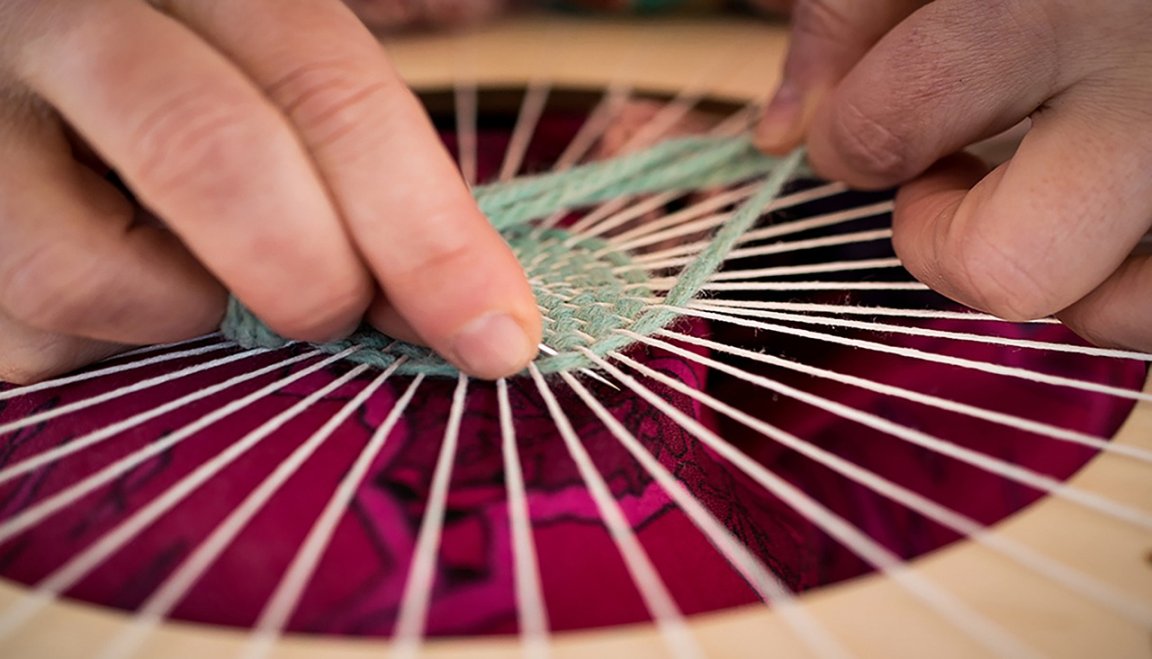Social sector actors working on complex social challenges know that they can benefit from drawing on the resources, skills, and experiences of others. Yet, very few take the leap due to the real or perceived difficulties associated with collaboration: Building consensus across multiple partners, sharing credit for work done, or accepting the risk that some partners might not deliver. This is known as a collaboration conundrum.
This has changed dramatically over the last few weeks, with many organisations coming together to respond to the COVID-19 crisis. The urgency of the situation, the scale at which it has impacted lives and livelihoods, and the need for an immediate response has resulted in the rapid formation of several broad-based collaboratives and coalitions. They are founded on a recognition of the fact that addressing the many challenges thrown up by the pandemic, and the ensuing lockdown, requires pooling in expertise, efforts, and resources, and that this cannot be the task of any single organisation.
We spoke to members of three different collaboratives that are currently responding to the crisis in distinct, yet complementary ways.

One of these, The National Coalition on Enabling a Rapid Rural Community Response to COVID-19 (RCRC Coalition) was set up to bring together civil society organisations working at the grassroots and to develop a coordinated response to the crisis. Another, the COVID-19 Resource Collaborative was created with the objective of assembling resources on fundraising, financial management, and managing teams, to help development sector organisations work effectively both during and after the crisis. And a third, the COVID Action Collaborative (CAC) was established to support various stakeholders—civil society, private sector, government, and others—to rapidly and cost-effectively prevent new infections, diagnose early, treat appropriately, and mitigate any other impacts of the pandemic.
Drawing on the experiences of these coalitions, here are some emerging learnings and insights for current and future collaborators:
“In crises, who do you reach out to? People you trust the most.” — Ved Arya, RCRC Coalition
Given the speed with which these collaboratives came together, a pre-existing degree of trust and good will between the first few collaborators proved to be a key ingredient. Convening partners ensured this by initially reaching out to organisations and networks that they already knew and trusted, and later expanding this to include organisations that came recommended by trusted sources.
Inherent trust has enabled organisations to rely on each other to a greater degree.
This inherent trust has enabled organisations to rely on each other to a greater degree. For instance, when the RCRC Coalition noticed a lack of representation from the northeast in its membership, they asked their partners to help them identify organisations to reach out to.

As collaboratives grow, it is important to keep investing in building and maintaining trust among members, as failing to do so could disengage newer partners. Building transparency into the collaborative process and open co-creation are key to building trust on an ongoing basis.

As collaboratives grow, it is important to keep investing in building and maintaining trust among members. | Picture courtesy: Wikimedia Commons
“A successful collaborative is one that has similar values, similar commitments, similar passion; a group of people whose intent is similar, and who don’t have any other agenda—neither political nor financial.” — Angela Chaudhuri, CAC
Coalitions bring together different kinds of organisations and individuals—nonprofits, for-profits, developers, designers, volunteers, and others—all of whom will work in their own distinct ways. It isn’t easy to bring people from different orientations together, but doing it well is key to amplifying impact. When prospective partners have a clear understanding of the purpose of a collaborative, they can determine if it makes sense for them to join and participate. Additionally, it is also helpful to identify other aspects—value systems, a common mission, a strategy, or a commitment to sharing information and resources—around which members can align.
As collaboratives evolve and grow, competing priorities may emerge that could cause shifts in alignment and commitment.
Both the RCRC Coalition and the CAC found it useful to draw up a formal charter or framework that sets out a common minimum programme for partners, allowing them to work together in a more organised way. Rather than being set in stone, these frameworks are seen as ‘living documents’ and are constantly evolving, in response to an evolving situation.
As collaboratives evolve and grow, competing priorities may emerge that could cause shifts in alignment and commitment. In the interest of working towards the greater good, it is important to keep an eye out for these changes, acknowledge and respond to them sooner rather than later.
“How can we make sure that we’re not duplicating efforts, that we’re moving quickly, and that we’re bringing people together as fast as possible?” — Mary Ellen Matsui, COVID-19 Resource Collaborative
Responding to a complex challenge, such as a pandemic, almost inevitably requires a multisectoral approach—which is where collaboratives come in. However, it is precisely this aspect of working together with people and organisations who come from different orientations that can slow collaboratives down.
In addition to finding alignment, crossing this bridge requires individual partners to recognise their strengths and the limits of their own perspective and experience. It also needs them to actively reach out to and learn from others who may have complementary capabilities in different domains. For instance, the initial members of the RCRC Coalition were all livelihoods organisations with limited knowledge of how to secure the health and safety of the communities they work in. Recognising this, they drew on the expertise of the Jan Swasthya Abhiyan, a national health network, and other public health experts to equip RCRC Coalition members with accurate advice to guide their health and safety efforts in communities.
Leveraging unique skills, aptitudes, and technologies—rather than duplicating existing efforts— is allowing these collaboratives to think and implement at scale and amplify impact.
“Nothing should be left unsaid, unheard, or un-understood at any point of time.” — Narendranath Damodaran, RCRC Coalition
Communication is a key ingredient to collaboration, and becomes even more important when people are working remotely. The process of communication can start before even taking the decision of whether or not to collaborate. For instance, the CAC sends out an email to potential collaborators, outlining what the partners are expected to contribute to the collective, and what resources will be available to them, should they decide to join. Once a new partner is identified, a robust on-boarding process is carried out: First, to present what the collaborative is about, and second, to understand what support the partner would like. These joint conversations allow mutual expectations to be set early on, creates ownership, and ensures active participation in the collaborative.
Once partners start working together, it is important to ensure that communication channels are kept open between everyone and that everybody is proactively kept in the loop about all aspects of their collaborative efforts. Not only does this promote transparency, it also helps streamline collective action, prevents duplication of efforts, and allows for cross-learning.
Effectively using both formal and informal communication platforms is one way of doing this. Formal communication mechanisms such as phone calls, virtual meetings, and emails can be used to communicate decisions, check-in on partners, or co-create systems and processes. Informal channels such as WhatsApp and Slack also play an important role, as they allow for free communication between a wider group of members, provide updates in real-time, and can be used both for work and to build camaraderie among geographically scattered members.
“Build systems for accountability and transparency down to the last point.” — Ved Arya, RCRC Coalition
By their very definition, collaboratives are made up of several members and will therefore benefit from instituting systems—for governance, accountability, and transparency—that enable members to work cohesively. In a collaborative, the key to building systems that work is to ensure that they are co-created by partners. Building these systems becomes even more critical when a collaborative chooses to raise and allocate funds.
The key is to ensure that leadership and decision-making power is distributed.
While some collaboratives choose to stay away from funding (since it has the potential to generate competition and conflict among members), others consciously make the decision to fundraise as a collaborative, as it helps reach organisations that find it more challenging to mobilise resources on their own. The CAC’s approach, for instance, is a reflection of the former. Rather than the collaborative acting as an intermediary, they see themselves as enablers of funding—a platform through which donors can fund individual organisations (rather than the collective as a whole). On the other hand, the RCRC Coalition recognises the weight of a collaborative in attracting funding, and has found useful to play a more active role in directing funding to its members. This allows them to avoid overlaps in funding for specific geographies.
It also helps to clearly articulate the many activities that a collaborative needs to conduct, and identify distinct sub-groups to carry out the associated responsibilities. Based on the individual needs and requirements of each collective, this may take various forms such as a governing council, a general body, and/or working groups that are created based on areas of expertise (such as health, livelihoods, and migration, or financing, human resources, and procurement).
The key here is to ensure that leadership and decision-making power are distributed.
Being mindful of these principles and course correcting whenever necessary can help fulfil the potential of collaborative action to mitigate risk for individual organisations, amplify impact, and give the sector a collective voice to influence public policy.
In addition to those quoted above, we also spoke with Shiv Kumar, Swapnil Agarwal, Dr RK Prasad, and Reeva Kulkarni.
Know more
- Learn more about how philanthropic collaborations succeed, and why they fail.
- Looking to maximise social impact through collaboration? Read this article from SSIR on hacking nonprofit collaboration.
- Explore some of the potential pitfalls and vulnerabilities that come with partnerships.
- Use this partnership matrix to better understand the various types of partnerships in which organisations can engage.
Do more
Are you searching for, or working on, a solution to COVID-19 or the effects of the lockdown?
- Join the CAC, volunteer your time, or share resources by writing in to covidaction@catalysts.org.
- Connect with the RCRC Coalition at info@rcrc.in.
- Reach out to reeva@atma.org.in to explore how you can engage with the COVID-19 Collaborative.





